🏰 Rajasthan’s Royal Heritage: Palaces and Forts of India’s Desert State 🌵
Exploring the Rich History and Grandeur of Rajasthan's Architectural Marvels
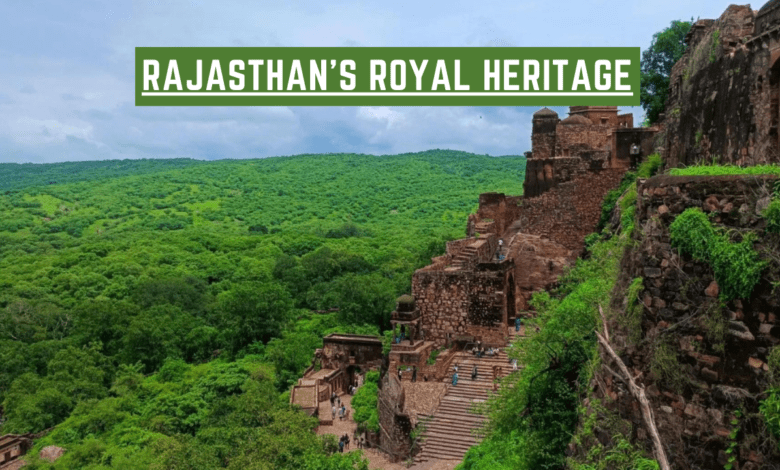
Rajasthan, often referred to as the “Land of Kings,” is a realm of opulence, grandeur, and timeless tales of valor. Nestled in the heart of India, this desert state is home to an extraordinary collection of palaces and forts that stand as living testaments to its rich history and regal heritage.
With their intricate architecture, vivid colors, and the echoes of bygone eras, these architectural marvels have earned Rajasthan a special place on the world’s cultural map. In this blog post, we will embark on a journey through the royal heritage of Rajasthan, exploring the magnificent palaces and awe-inspiring forts that have enthralled travelers for centuries.
The Majestic Palaces of Rajasthan
The City Palace, Jaipur: A Blend of Mughal and Rajput Architecture
The City Palace in Jaipur is a breathtaking testament to the rich cultural heritage of Rajasthan. This magnificent palace is a harmonious blend of Mughal and Rajput architectural styles, making it a true architectural gem. As you step into the palace complex, you’ll be transported back in time to the era of kings and queens.
The Mughal influence on the City Palace is evident in its intricate marble work, beautifully landscaped gardens, and ornate courtyards. The palace’s intricate detailing, with delicate frescoes and stunning mirror work, reflects the Mughal love for art and aesthetics.
On the other hand, the Rajput architecture is manifested in the sturdy and majestic structures of the palace, adorned with vibrant colors and traditional Rajasthani motifs. The City Palace showcases the grandeur and opulence that were synonymous with the Rajput rulers.
Exploring the City Palace is like taking a journey through history. Visitors can wander through the various courtyards, halls, and museums within the complex, each offering a glimpse into the royal lifestyle. Don’t miss the Chandra Mahal and Mubarak Mahal, two of the most prominent structures within the palace, which house a remarkable collection of artifacts and art pieces.
The City Palace is not only a visual treat but also a cultural and historical treasure trove. Its timeless charm and architectural brilliance make it a must-visit destination for anyone exploring the vibrant state of Rajasthan.
Udaipur’s Lake Palace: A Floating Marvel on Lake Pichola
The Lake Palace in Udaipur, often referred to as the “Venice of the East,” is a marvel that seems to float on the serene waters of Lake Pichola. This ethereal palace, with its white marble façade, is a romantic and picturesque sight that captures the hearts of all who behold it.
The palace was originally built as a summer retreat for the Mewar dynasty’s royalty and has since been transformed into a luxurious heritage hotel. Its unique location amidst the lake offers guests an unforgettable experience of staying in a palace surrounded by water.
The architecture of the Lake Palace is a fine example of Mewar craftsmanship, showcasing exquisite marble carvings, intricate jali work, and beautiful courtyards. The palace’s design incorporates the natural beauty of its surroundings, with breathtaking views of the lake and the Aravalli hills.
A visit to the Lake Palace is incomplete without taking a boat ride on Lake Pichola to reach this floating marvel. As you approach the palace, its shimmering reflection on the water adds to its enchanting allure.
Whether you choose to stay at the Lake Palace or simply visit it for a day, the experience is nothing short of magical. It’s a place where history, architecture, and nature come together to create a truly enchanting ambiance that will leave you spellbound.
Junagarh Palace, Bikaner: A Symbol of Rajput Grandeur
Junagarh Palace, located in the heart of Bikaner, is a magnificent architectural masterpiece that stands as a symbol of Rajput grandeur and opulence. This grand palace, built by Raja Rai Singh in the 16th century, is a testament to the rich history of the region.
What sets Junagarh Palace apart is its unique blend of various architectural styles, including Rajput, Mughal, and Gujarati influences. The palace’s red sandstone and marble facades are adorned with intricate carvings, ornate balconies, and beautifully designed courtyards.
As you explore the palace’s many rooms and halls, you’ll be transported to a bygone era, where you can marvel at the royal living quarters, decorated with exquisite paintings, delicate mirror work, and intricate frescoes. The Anup Mahal, Ganga Mahal, and Phool Mahal are just a few of the highlights that showcase the palace’s grandeur.
Junagarh Palace also houses a museum that displays a rich collection of artifacts, including weaponry, costumes, and royal memorabilia. It provides a deeper insight into the royal lifestyle and history of the region.
A visit to Junagarh Palace is a journey through time, offering a glimpse into the lavish lives of the Rajput rulers. Its architectural splendor and historical significance make it a must-visit destination in Bikaner, where you can immerse yourself in the grandeur of Rajasthan’s past.
Mehrangarh Fort, Jodhpur: A Glimpse into the Royal Lifestyle
Perched atop a rocky hill in Jodhpur, Mehrangarh Fort stands as a magnificent symbol of power and grandeur. This imposing fort is one of the largest in India and offers visitors a fascinating glimpse into the royal lifestyle of the Marwar dynasty.
Mehrangarh Fort’s massive walls, which seem to merge seamlessly with the rock they are built on, are a testament to the architectural brilliance of its builders. The fort’s strategic location provided protection to the rulers of Jodhpur and served as a symbol of their dominance.
Exploring the fort’s interior is like stepping into a different era. The intricately decorated palaces, like Moti Mahal, Phool Mahal, and Sheesh Mahal, reflect the opulence and taste of the Rajput rulers. The museum within the fort houses a remarkable collection of artifacts, including royal garments, weapons, paintings, and musical instruments.
The fort also offers panoramic views of Jodhpur’s blue city, a sight that is as mesmerizing as the fort itself. Walking through its massive gates and courtyards, you can almost feel the history and valor that once defined this stronghold.
Mehrangarh Fort is not just a historical site; it’s an experience that immerses you in the grandeur and majesty of Rajasthan’s royal past. Whether you’re a history enthusiast, an architecture lover, or simply seeking a breathtaking view, a visit to Mehrangarh Fort is an essential part of any trip to Jodhpur.

The Impregnable Forts of Rajasthan
Amber Fort, Jaipur: A Fort-Palace on the Aravalli Hills
Amber Fort, perched majestically atop the rugged Aravalli hills, is a stunning architectural marvel and a testament to the grandeur of Rajasthan’s history. Located just a few kilometers from Jaipur, this fort-palace is a perfect blend of Rajput and Mughal architectural styles, showcasing the rich cultural heritage of the region.
The fort’s magnificent exterior, made of red sandstone and marble, is a striking sight against the backdrop of the Aravalli hills. As you enter the fort through the Sun Gate or Suraj Pol, you’ll be transported back in time to the era of the Rajput Maharajas.
Inside Amber Fort, you’ll discover a world of opulence and luxury. The Sheesh Mahal, or Hall of Mirrors, is a dazzling chamber adorned with intricate mirror work that reflects light in a mesmerizing dance. The Diwan-i-Aam (Hall of Public Audience) and Diwan-i-Khas (Hall of Private Audience) are adorned with exquisite paintings and carvings that speak of the royal splendor.
A ride on an elaborately decorated elephant to the fort’s main entrance is a quintessential Amber Fort experience. From the top of the fort, you can enjoy panoramic views of Maota Lake and the surrounding hills, creating a picture-perfect setting that encapsulates the essence of Rajasthan.
Chittorgarh Fort: A Symbol of Rajput Valor and Sacrifice
Chittorgarh Fort, situated on a rocky hill in the city of Chittorgarh, is more than just a fort; it’s a symbol of Rajput valor, resilience, and sacrifice. This colossal fort, spread over 700 acres, is the largest in India and boasts a history that is as rich as it is turbulent.
The fort is dotted with numerous palaces, temples, and gates, each bearing witness to the glorious past of Chittorgarh. The towering Vijay Stambh (Victory Tower) and Kirti Stambh (Tower of Fame) are iconic structures that commemorate the valor of Rajput warriors.
One of the most poignant stories associated with Chittorgarh is the tale of Rani Padmini’s beauty and the siege of the fort by Alauddin Khilji. This historic event is etched in the annals of Rajput history, symbolizing the unwavering spirit of sacrifice and honor.
Visiting Chittorgarh Fort allows you to walk in the footsteps of legendary Rajput heroes and witness the architectural marvels of bygone eras. The fort’s stunning views, serene temples, and resonating legends make it a must-visit destination for history enthusiasts and travelers alike.
Kumbhalgarh Fort: The Great Wall of India
Kumbhalgarh Fort, often referred to as the “Great Wall of India,” stands as a colossal sentinel in the Aravalli hills of Rajasthan. This majestic fort is renowned for its incredibly long and imposing fortifications, second in length only to the Great Wall of China.
The fort’s massive walls, stretching over 36 kilometers, are a testament to the engineering brilliance of the Mewar dynasty. They are said to be wide enough to allow eight horses to walk abreast, and their strategic construction made Kumbhalgarh one of the most impregnable forts in Rajasthan.
Inside the fort, you’ll find a treasure trove of historical and architectural wonders. The Badal Mahal, or Palace of Clouds, offers panoramic views of the surrounding countryside and is a testament to the artistic excellence of the era. The intricately carved temples, including the Neelkanth Mahadev Temple, are exquisite examples of Rajput architecture.
Kumbhalgarh Fort is not only a historical marvel but also a UNESCO World Heritage Site, recognized for its cultural significance. Exploring its vast expanse, you’ll be transported to a time when valor and grandeur defined the Rajputana region.
Ranthambore Fort: Where Nature and History Converge
Ranthambore Fort, nestled within the Ranthambore National Park, is a unique fusion of history and wildlife. This fort, perched atop a rocky hill, offers a glimpse into the regal past of Rajasthan while allowing you to witness the natural beauty and biodiversity of the region.
The fort is believed to date back to the 10th century and was a strategic stronghold for various rulers over the centuries. Its impressive architecture includes towering gates, temples, and palaces, such as the impressive Hammir Court and Badal Mahal.
One of the most captivating aspects of Ranthambore Fort is its location within a wildlife sanctuary. As you explore the fort, you may encounter the rich flora and fauna of Ranthambore, including the majestic Bengal tiger. The fort offers an unparalleled opportunity for wildlife enthusiasts and history buffs to coexist in the same breathtaking landscape.
The panoramic views from the fort are breathtaking, offering a unique perspective on the surrounding wilderness. As you stand at the fort’s vantage points, you can appreciate the harmonious coexistence of history, nature, and wildlife that defines Ranthambore. Check out more about Rajasthan on Wikipedia.
The Cultural Significance
Rajasthan’s Role in Preserving Its Royal Heritage
Rajasthan, often referred to as the “Land of Kings,” has played a pivotal role in preserving its royal heritage, ensuring that the rich cultural tapestry of the region remains intact for generations to come. The state’s commitment to maintaining its historical palaces, forts, and traditions is a testament to its deep-rooted cultural significance.
- Palace Conservation: Rajasthan’s royal palaces have been meticulously maintained, offering visitors a glimpse into the opulent lifestyles of the erstwhile Maharajas. These palaces, such as the City Palace in Jaipur and Udaipur’s Lake Palace, have been converted into museums and heritage hotels, allowing guests to immerse themselves in the grandeur of a bygone era. The careful restoration and preservation of these architectural wonders showcase Rajasthan’s dedication to its royal legacy.
- Fortress Heritage: Rajasthan boasts some of India’s most formidable forts, like Chittorgarh Fort and Mehrangarh Fort in Jodhpur. These fortresses are not only symbols of Rajput valor but also living testaments to the state’s commitment to preserving its historical treasures. Restoration efforts have ensured that these forts remain accessible to the public, allowing them to experience the grandeur of Rajasthan’s past.
- Cultural Festivals: Rajasthan’s cultural heritage is celebrated with fervor through various festivals, such as the Pushkar Camel Fair and the Desert Festival in Jaisalmer. These events showcase the state’s traditional music, dance, art, and cuisine, offering a window into its vibrant and diverse culture. The preservation of these festivals ensures that age-old traditions continue to thrive in the modern era.
- Heritage Walks: Many cities in Rajasthan offer heritage walks, where tourists can explore the historical and architectural gems under the guidance of knowledgeable guides. These walks not only educate visitors about the cultural significance of the sites but also contribute to their upkeep through tourism revenue.
- Artisan Communities: Rajasthan is home to numerous artisan communities that have passed down their crafts from one generation to another. These skilled artisans create exquisite handcrafted items, including textiles, jewelry, pottery, and more. The state’s support for these communities helps preserve traditional craftsmanship and ensures its continued relevance.
- Conservation Organizations: Rajasthan has several conservation organizations dedicated to the protection of its cultural heritage. These organizations work on restoring and maintaining historical sites, as well as promoting awareness about the importance of preserving Rajasthan’s rich heritage.
The Vibrant Festivals and Events Celebrated at These Palaces and Forts
Rajasthan’s palaces and forts come alive with a multitude of vibrant festivals and events that add an extra layer of cultural significance to these historical landmarks. These celebrations offer a unique opportunity for locals and tourists alike to partake in the region’s rich traditions.
- Elephant Festivals: The City Palace in Jaipur hosts the annual Elephant Festival, where these majestic creatures are adorned with colorful decorations and participate in parades. This event not only showcases Rajasthan’s reverence for elephants but also highlights the deep bond between these animals and the local culture.
- Diwali Celebrations: Diwali, the festival of lights, is celebrated with great pomp and splendor at many palaces and forts in Rajasthan. The illumination of these architectural wonders during Diwali creates a mesmerizing spectacle that attracts visitors from all over the world.
- Holi: The vibrant festival of Holi is celebrated with enthusiasm at various locations in Rajasthan, including the historic city of Bundi. The forts and palaces serve as picturesque backdrops for the colorful festivities, where people come together to play with colored powders and water.
- Magnetic Fields Festival: Held at the Alsisar Mahal in Shekhawati, the Magnetic Fields Festival is a unique blend of music, art, and culture. It brings together international and local artists and musicians to perform against the backdrop of a heritage palace, creating a fusion of contemporary and traditional arts.
- Folk Performances: Many forts and palaces regularly host folk music and dance performances. These cultural showcases provide a platform for local artists to display their talents while allowing visitors to immerse themselves in Rajasthan’s artistic traditions.
Modern-Day Relevance
Tourism and the Economy of Rajasthan
Tourism plays a pivotal role in the modern-day relevance of Rajasthan. The state’s rich cultural heritage, historical palaces, and impregnable forts have transformed it into a major tourist destination, contributing significantly to its economy.
- Tourism Revenue: Rajasthan’s tourism sector is a vital source of revenue. The influx of domestic and international tourists who visit the palaces, forts, and cultural festivals stimulates economic growth. Tourists spend on accommodation, dining, transportation, and purchasing handicrafts, textiles, and other souvenirs, which benefits local businesses and artisans.
- Job Creation: The tourism industry provides employment opportunities to a substantial portion of Rajasthan’s population. People working in hospitality, tour guiding, transportation, and handicraft production rely on tourism-related income. The sector has not only generated jobs but also fostered entrepreneurship, contributing to a diverse economy.
- Infrastructure Development: To accommodate the growing number of tourists, Rajasthan has invested in infrastructure development. Improved roads, transportation networks, and communication facilities have made it easier for visitors to explore the state’s cultural treasures. This development also enhances the overall quality of life for residents.
- Promotion of Heritage: Tourism encourages the preservation and promotion of Rajasthan’s heritage. The revenue generated is often reinvested in the conservation and maintenance of historical sites. This ensures that future generations can continue to appreciate the state’s architectural wonders and cultural traditions.
- Cultural Exchange: Tourism fosters cultural exchange and understanding. Visitors from different parts of the world have the opportunity to interact with Rajasthan’s diverse population, learn about its traditions, and appreciate its art forms. This exchange enriches the cultural fabric of the state.
- Sustainable Tourism: Rajasthan has increasingly embraced sustainable tourism practices to protect its natural resources and reduce its ecological footprint. Initiatives like eco-friendly accommodations, wildlife conservation efforts, and responsible tourism campaigns aim to ensure the long-term viability of tourism in the region.
Ongoing Restoration Efforts to Preserve These Treasures
Preserving Rajasthan’s historical palaces and forts is an ongoing endeavor, crucial for maintaining their cultural and historical significance. Various organizations, both government and private, are actively involved in restoration efforts.
- Government Initiatives: The Government of Rajasthan has established bodies like the Rajasthan Heritage Conservation and Promotion Authority (RJHCPA) to oversee the restoration and maintenance of heritage sites. These initiatives focus on preserving the architectural integrity of palaces and forts.
- Private Conservation: Many heritage hotels and trusts have taken up the responsibility of restoring and maintaining historical properties. These private efforts ensure that these treasures are not only preserved but also made accessible to the public through heritage tourism.
- International Collaboration: Rajasthan has collaborated with international organizations and experts in heritage conservation. These partnerships bring in expertise, funding, and best practices to ensure that restoration efforts meet global standards.
- Community Involvement: In some cases, local communities are actively involved in the preservation of heritage sites. This approach fosters a sense of ownership and pride among the residents, encouraging them to protect and showcase their cultural heritage.
- Conservation Technologies: Advanced conservation technologies, such as 3D scanning, laser mapping, and specialized restoration techniques, are used to ensure the structural stability and authenticity of historical sites during restoration.
- Educational Initiatives: Awareness and education programs are conducted to engage the public, tourists, and students in understanding the importance of heritage conservation. These initiatives promote responsible tourism and encourage respect for historical sites.
FAQs
Q: What is the best time to visit Rajasthan’s palaces and forts?
A: The best time to visit is during the winter months, from October to March, when the weather is pleasant for sightseeing.
Q: Are these palaces and forts open to the public?
A: Yes, most of them are open to the public, allowing visitors to immerse themselves in Rajasthan’s rich heritage.
Q: How can I reach Rajasthan?
A: Rajasthan is well-connected by air, rail, and road. Major cities like Jaipur, Jodhpur, and Udaipur have airports, and there are numerous train and bus options.
Q: Are guided tours available?
A: Yes, guided tours are widely available and recommended to make the most of your visit, as they provide insights into the history and significance of these landmarks.
Q: What should I wear when visiting these places?
A: Dress comfortably and modestly, respecting the local culture. Lightweight clothing and comfortable shoes are advisable, especially in the warmer months.
Q: Which fort is the most captivating?
A: Each fort has its charm, but Jaisalmer Fort’s unique location in the desert and its golden hues make it particularly captivating.
Conclusion
In a world that often seems to be in a relentless rush toward the future, Rajasthan’s palaces and forts stand as proud guardians of a regal past. They remind us of the enduring spirit of a bygone era, a time when craftsmanship was revered, traditions were cherished, and every stone told a story.
As we conclude our journey through Rajasthan’s royal heritage, we extend an invitation to all those who seek to be enveloped in the rich tapestry of history, art, and culture. Come, wander through the echoing corridors of these palaces, stand atop the ramparts of these forts, and let Rajasthan’s royal heritage transport you to a world where time stands still, and the legacy of kings and queens lives on in every stone and sunset. Rajasthan beckons, and its stories await your discovery.
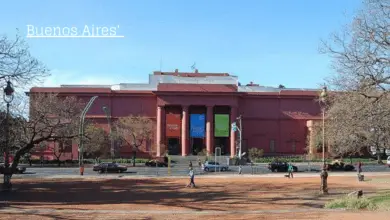
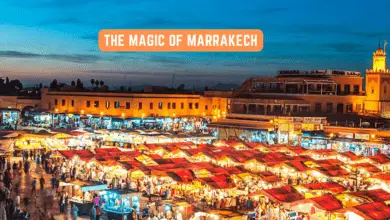
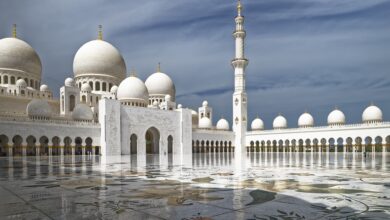
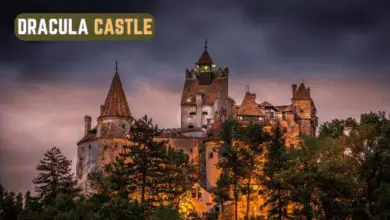

Facebook Comments